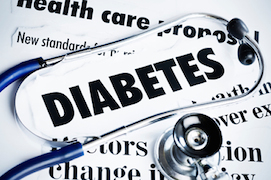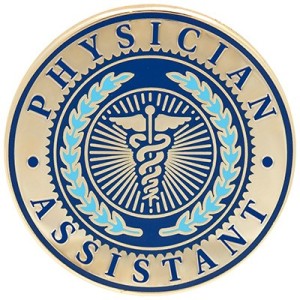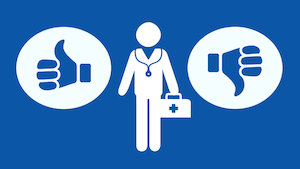Space Coast Daily’s Top 25 Healthcare Headlines of 2014
By Dr. James Palermo // January 1, 2015
BEST WISHES FOR A SAFE, HAPPY, HEALTHY 2015
BREVARD COUNTY – From the political and medical controversies surrounding the legalization of medical marijuana to a devastating rise in diabetes and a promising breakthrough in the treatment of autism, 2014 has been an interesting and exciting year for Healthcare Headlines.
Although the biggest healthcare story of 2014 was the devastating Ebola epidemic in West Africa and individual cases of exposure and disease that reached our shores, there were many other stories this year that provide important warnings and advice, report on extraordinary breakthroughs and have a significant impact on our health and well being.
Here are 25 Healthcare Headlines of 2014 that should peek your interest and provide meaningful information to help you live a healthier 2015.
GOVERNOR SCOTT SIGNS LIMITED USE MEDICAL MARIJUANA INTO LAW
 Florida Governor Rick Scott signed a law in June allowing for the limited use of a special strain of medical marijuana to treat epileptic seizures, cancer and amyotrophic lateral sclerosis (ALS), known as Lou Gehrig’s diseases, but does not induce the psychoactive high typically associated with recreational marijuana use.
Florida Governor Rick Scott signed a law in June allowing for the limited use of a special strain of medical marijuana to treat epileptic seizures, cancer and amyotrophic lateral sclerosis (ALS), known as Lou Gehrig’s diseases, but does not induce the psychoactive high typically associated with recreational marijuana use.
Florida joins 20 other states and the District of Columbia that have some form of laws that permit the use of marijuana for medicinal purposes.
The law, which was passed with bipartisan support in the spring legislative session, was not related to a more expansive and controversial medical marijuana referendum which failed to get the necessary 60 percent of the vote in November. (Cotterell, Reuters, 6/16)
BRINGING BACK THE ‘ART’ OF BEDSIDE MEDICINE
 In this new millennium age of medicine it seems that a physician’s diagnostic acumen is increasingly primarily dependent on the incredible anatomic resolution afforded by the plethora of scans, grams and digital imaging technology, and the electronic decision support now available to us.
In this new millennium age of medicine it seems that a physician’s diagnostic acumen is increasingly primarily dependent on the incredible anatomic resolution afforded by the plethora of scans, grams and digital imaging technology, and the electronic decision support now available to us.
Realizing that the “art” of medicine has taken a back seat to technology and hurt some doctors’ abilities to use physical exams to make accurate diagnoses, Kaiser Health News reports that some medical schools have made reviving bedside medicine a new priority. (Boodman, Kaiser Health News, 5/20)
U.S. BIRTH RATE HITS LOWS FOR TEENS, HIGHS FOR OLDER WOMEN
 A 2014 report from the Centers for Disease Control and Prevention’s National Center for Health Statistics showed that the birth rate among U.S. teens and young women dropped to record lows last year, while the rate among older women hit highs not seen in over 50 years.
A 2014 report from the Centers for Disease Control and Prevention’s National Center for Health Statistics showed that the birth rate among U.S. teens and young women dropped to record lows last year, while the rate among older women hit highs not seen in over 50 years.
The general fertility rate overall in the U.S. reached a record low of 62.9 births per 1,000 women. (FOX News/Reuters, 5/29)
USA LEADS THE WORLD IN OBESITY
 A study published in June in the medical journal Lancet reports that by sheer numbers, America indisputably leads the world in obesity, with 87 million of the world’s 671 million obese people, which is 13 percent of the world total for a country with 5 percent of the population.
A study published in June in the medical journal Lancet reports that by sheer numbers, America indisputably leads the world in obesity, with 87 million of the world’s 671 million obese people, which is 13 percent of the world total for a country with 5 percent of the population.
However, according to the authors of the report, we are hardly alone in our battle of the bulge, with obesity a growing problem worldwideand, by proportion, even worse in some other countries. Rates are rising among men, women and children, in rich countries and in poor countries. (Ostrow, Bloomberg, 5/28)
WORK v. HOME: WHERE IS THE MOST STRESS?
 Being at the office may actually be less stressful than being at home, where things like chores, spouse demands and children’s needs can take precedence, according to a new study from the Council on Contemporary Families. (Luscombe, TIME, 5/22)
Being at the office may actually be less stressful than being at home, where things like chores, spouse demands and children’s needs can take precedence, according to a new study from the Council on Contemporary Families. (Luscombe, TIME, 5/22)
U.S. TEENS LESS FIT NOW THAN EVER BEFORE
You may want to reconsider signing your child up for computer camp… because, according to 2014 Centers for Disease Control and Prevention (CDC) data, teenagers are getting “wimpier,” with only about 42 percent of American kids ages 12 to 15 even close to being aerobically fit, down from 52 percent in 1999 and 2000. (Shute, NPR, 5/28)
DIABETES ON THE RISE IN U.S. WITH OVER 8 MILLION UNDIAGNOSED
 According to a Center for Disease Control and Prevention report released in June 2014, about 29 million Americans—or 9 percent of the population—are living with diabetes, but nearly one-quarter of those diabetics are unaware of their condition.
According to a Center for Disease Control and Prevention report released in June 2014, about 29 million Americans—or 9 percent of the population—are living with diabetes, but nearly one-quarter of those diabetics are unaware of their condition.
The report, which is based on data from 2012, found that the number of Americans with diabetes rose from 26 million in 2010 to 29 million in 2012, with nearly 1.7 million people ages 20 and up diagnosed in 2012.
If the current trends continue, 20 percent of Americans will have diabetes by 2025 and 33 percent by 2050. Diabetes and complications related to the disease accounted for $245 billion in total medical costs and lost work and wages in 2012. (Preidt, US News & World/Report/HealthDay, 6/10)
MARRIAGE IMPROVES MEN’S HEALTH, ‘SHACKING UP’ NOT SO MUCH
 According to the CDC’s 2011-2012 National Center for Health Statistics‘ (NCHS) National Health Interview Survey, marriage is good for a man’s health, and it’s actually having a marriage license that matters — not just living with a partner.
According to the CDC’s 2011-2012 National Center for Health Statistics‘ (NCHS) National Health Interview Survey, marriage is good for a man’s health, and it’s actually having a marriage license that matters — not just living with a partner.
The survey found that cohabiting men were less likely than married men to have seen their doctor in the previous year.
Apparently married men are more likely to get preventive screenings than cohabitating men and single men. And women? They appear to take care of their own health whether they are single, married, or somewhere in between. (Dotinga, CBS News/HealthDay, 6/11)
DEATHS DUE TO ABUSE AND OVERDOSE OF PRESCRIPTION PAINKILLERS ON THE RISE
 In a first-of-its-kind review, researchers from McGill University in Canada have revealed exactly how much the devastating death rate due to prescription pain killers has increased in recent years, and, publishing their results in in the American Journal of Public Health, call it an “epidemic.”
In a first-of-its-kind review, researchers from McGill University in Canada have revealed exactly how much the devastating death rate due to prescription pain killers has increased in recent years, and, publishing their results in in the American Journal of Public Health, call it an “epidemic.”
Nicholas King, study author from the Biomedical Ethics Unit in the Faculty of Medicine at McGill, explains that he and his team “wanted to find out why thousands of people in the U.S. and Canada are dying from prescription painkillers every year, and why these rates have climbed steadily during the past 2 decades.”
According to the team, the US and Canada rank number 1 and number 2 in per capita opioid (includes morphine, oxycontin, methadone, codeine and others) consumption, respectively, and in 2010 in the US alone, prescribed painkillers were involved in over 16,000 deaths. (Ellis, Medical News Today, 6/19)
U.S. TAXPAYERS SUBSIDIZING 76% OF ACA POLICY PREMIUMS
 A mid-year Health and Human Services report indicated that the large subsidies for health insurance that helped fuel the successful drive to sign up approximately 8 million Americans for coverage under the Affordable Care Act (ACA, aka Obamacare) are on track to cost billions of dollars this year.
A mid-year Health and Human Services report indicated that the large subsidies for health insurance that helped fuel the successful drive to sign up approximately 8 million Americans for coverage under the Affordable Care Act (ACA, aka Obamacare) are on track to cost billions of dollars this year.
According to the report, nearly nine in 10 Americans who bought healthcare coverage on the federal government’s healthcare marketplaces received government assistance to offset their premiums, with U.S. taxpayers projected to subsidize 76 percent of the average monthly premium in the 36 federally administered markets.
As a result of the subsidies, about two-thirds of HealthCare.gov shoppers who qualified for tax credits are paying $100 or less each month for health insurance. (Health & Human Services, 6/18)
NEW PEDIATRIC GUIDELINES: READ TO YOUR BABY
 The American Academy of Pediatrics says it is never too early for parents to start reading to newborns.
The American Academy of Pediatrics says it is never too early for parents to start reading to newborns.
Research shows that reading aloud to babies promotes the enhancement of cognitive, motor, language and developmental skills, and that families served by programs such as Reach Out and Read actually read together more often, while providing children entering kindergarten a larger vocabulary, stronger language skills, and a “jump start” to better prepare and achieve their potential throughout their academic careers. (Joyce, The Washington Post, 6/24)
DEMAND FOR NPs, PAs SOARS UNDER OBAMARE
 Forbes reports that a new study by physician staffing firm Merritt Hawkins indicates the number of search assignments the company did for physician assistants (PAs) and nurse practitioners (NPs) jumped by 320 percent over the last two years.
Forbes reports that a new study by physician staffing firm Merritt Hawkins indicates the number of search assignments the company did for physician assistants (PAs) and nurse practitioners (NPs) jumped by 320 percent over the last two years.
This unprecedented demand for PAs and NPs reflects the rapidly changing healthcare workforce created by the growing demand for more primary care medical providers and care coordinators as more Americans gain coverage under the Affordable Care Act (Japsen, Forbes, 6/29).
20 MILLION AMERICANS GAINED COVERAGE UNDER THE ACA IN 2014
Throughout 2014, there was an intense focus on Affordable Care Act (ACA, aka Obamacare) healthcare coverage enrollment through the federal and state marketplaces that appears to have clouded the picture on the overall impact of all of the provisions of the law on coverage gains.
 Although 8 million people had purchased coverage through the individual marketplaces when the ACA’s first open enrollment period closed at the end of March, according to a July report published in the New England Journal of Medicine, 20 million Americans are estimated to have gained coverage or enrolled in a new plan under the law when the expansion of dependent coverage, policies purchased directly from insurers and the broadening of Medicaid and Children’s Health Program eligibility are taken into account.
Although 8 million people had purchased coverage through the individual marketplaces when the ACA’s first open enrollment period closed at the end of March, according to a July report published in the New England Journal of Medicine, 20 million Americans are estimated to have gained coverage or enrolled in a new plan under the law when the expansion of dependent coverage, policies purchased directly from insurers and the broadening of Medicaid and Children’s Health Program eligibility are taken into account.
An analysis, by Commonwealth Fund President David Blumenthal, M.D, and Vice President Sara Collins, Ph.D., looked at the gains in enrollment under different provisions of the law.
MOST CONSUMERS UNCLEAR ON PHYSICIAN QUALITY
Most Americans don’t know how to compare the quality of their doctors, according to a new Associated Press-NORC Center for Public Affairs Research poll.
 The most important factor in choosing a physician should be their quality performance scores that reflect the clinical outcomes of their patients. Unfortunately, although there is available information online related to aggregate quality outcomes for hospitals and some large group practices, there is little or no clinical outcomes data for individual physicians out there.
The most important factor in choosing a physician should be their quality performance scores that reflect the clinical outcomes of their patients. Unfortunately, although there is available information online related to aggregate quality outcomes for hospitals and some large group practices, there is little or no clinical outcomes data for individual physicians out there.
According to the poll, just 22% of those questioned are confident they can find information to compare the quality of local doctors, and few trust quality information from online patient reviews, health insurers, ratings web sites, the media, or even the government. (AP/Modern Health Care, 7/20)
MIDDLE-AGED WOMEN REDUCE BREAST CANCER RISK WITH ‘MODERATE’ EXERCISE
A study published in Cancer Epidemiology, Biomarkers & Prevention and based on the French component of the European Prospective Investigation Into Cancer and Nutrition, which included 59,308 French women ages 43 to 78, found that post-menopausal women can reduce their risk of breast cancer by approximately 10 percent with a “modest” amount of exercise.
 The researchers refer to “modest” as four hours a week of walking or more intensive physical activity such as cycling for just two hours a week, and found that more physical activity did not decrease the risk of breast cancer further.
The researchers refer to “modest” as four hours a week of walking or more intensive physical activity such as cycling for just two hours a week, and found that more physical activity did not decrease the risk of breast cancer further.
The effect was found to exist “independent of weight, body fat, waist circumference and exercise levels from five to nine years earlier.” (Healy, Los Angeles Times, 8/12)
VIOLINIST FIDDLES WITH SMART BOW TO DIRECT BRAIN SURGERY
This is a fascinating story from engadget.com that chronicles a delicate brain surgery procedure called deep brain stimulation (DBS) performed on an awake concert violinist as he plays the violin during the operation to implant pacemaker electrodes to treat his tremor.
With a motion-tracking sensor in the bow of his violin, Mayo Clinic neurosurgeons were able to determine the exact placement of the electrodes that would steady his arm and prevent the tremor.
The patient, Roger Frisch, and his Mayo Clinic neurosurgeon, Dr. Kendall Lee discuss the problem and incredible, innovative approach to a surgical solution in the YouTube video below. (Fingas, Engadget, 8/18)
HEALTH ORGANIZATIONS STRONGLY RECOMMEND REGULATORY CRACKDOWN ON E-CIGARETTES
In a 2014 report, the World Health Organization is calling for a regulatory crackdown on e-cigarettes, citing their direct health effects as well as their potential to lure youths into lifelong tobacco use.
 Also, the American Heart Association recently issued a policy statement recommending stricter regulations on e-cigarette use, manufacturing, marketing and distribution to include a federal government ban on sales of e-cigarettes to minors just as it does for cigarettes and smokeless tobacco products.
Also, the American Heart Association recently issued a policy statement recommending stricter regulations on e-cigarette use, manufacturing, marketing and distribution to include a federal government ban on sales of e-cigarettes to minors just as it does for cigarettes and smokeless tobacco products.
Additional warnings about e-cigarette use among adolescents come from a study published by the center for Disease Control (CDC), which found that youths who had never smoked but who used e-cigarettes were twice as likely to report an intention to begin smoking as those who did not use e-cigarettes. (Nebehay and Hirschler, Reuters, 8/26; Yurkiewicz, Med Page Today, 8/25)
CVS REMOVES TOBACCO PRODUCTS AND CHANGES NAME
This year, CVS Caremark, the country’s largest retail healthcare provider announced that selling cancer-causing products like tobacco conflicts with its mission to provide high quality products and services that improve the health of their customers through its pharmacies and Minute Clinic walk-in primary care centers, and said that tobacco products would go off the shelves at all of its 7,700 retail stores by October 1.
 Those products have actually already been removed, a month ahead of schedule, and CVS Caremark is changing its name to CVS Health, effective immediately. In addition in-store and online anti-smoking campaigns have been launched.
Those products have actually already been removed, a month ahead of schedule, and CVS Caremark is changing its name to CVS Health, effective immediately. In addition in-store and online anti-smoking campaigns have been launched.
The move will cost the company an estimated $2 billion in annual tobacco sales by no longer carrying the number-one cause of preventable death.
However, CVS executives are hopeful that abandoning smokers will boost CVS’s recent efforts to expand its pharmacies and better position them as a primary provider of health care services, reach more profitable agreements with hospitals and insurers, and appeal to the expanding number of newly insured under the Affordable Care Act (ACA). (Murphy, Huffington Post, 9/3)
AUTISM TREATMENT IN INFANCY MAY PREVENT FURTHER SYMPTOMS
In 2014, a team of autism experts, led by Dr. Sally J. Rogers of the University of California at Davis Mind Institute, published the results of a study in the Journal of Autism and Developmental Disorders that are very compelling and suggest that effective autism treatment is dependent on early detection, and that the sooner therapy begins, the better the chances are of preventing full onset of symptoms before the age of 3.
The early interventional treatment called Infant Start is provided in the home and focuses on parent-child interactions during the routines of everyday life.
In the UC Davis Mind Institute Youtube video below, Dr. Rogers discusses the benefits of the Infant Start program emphasizing that parents, who are “the experts” on their babies, are best positioned to identify early symptoms of autism and engage in daily ongoing therapeutic interactions. (McNamme, Medical News Today, 9/9)
COLORADO CAMPAIGN TO CONVINCE TEENS POT IS HARMFUL
Multiple reports show that fewer adolescents believe that smoking pot on a regular basis is harmful to health, and concomitantly are initiating cannabis use at younger ages, and more adolescents are using cannabis on a daily basis. Add to that disconcerting trend the legalization of recreational marijuana and it’s perfectly clear why Colorado is trying hard to convince its teenagers that smoking pot is bad.
There is a growing body of evidence that shows that marijuana isn’t good for the developing brain with recent studies showing very strong evidence that marijuana plays a causative role in mental health problems and subsequent drug abuse in heavy users, and links to lower IQs and anatomic brain changes.
The Colorado campaign, which launched last month, is designed to target kids in the 12 to 15 age group, includes a website with links to news stories about the negative effects of marijuana, and emphasizes the importance for everyone to educate themselves on the harmful effects of marijuana.
The TV ad below from Denver’s Sukle Advertising for the Colorado Governor’s Office “Don’t Be A Lab Rat” Campaign shows a group of teens lighting up inside a dark car as moody music plays in the background. The commercial cites a Duke University study that found a link between regular marijuana use and a lower IQ and appeals to the viewer to take heed of the findings and possible dire consequences of the use of marijuana. (Singh, NPR, 9/17)
CDC: LIFE EXPECTANCY IN U.S. REACHES RECORD HIGH
The National Center for Health Statistics, Division of Vital Statistics at the Centers for Disease Control and Prevention (CDC) this year reported that life expectancy at birth among the US population – defined as “the average number of years that a group of infants would live if the group was to experience throughout life the age-specific death rates present in the year of birth” – increased from 78.7 years in 2011 to 78.8 years in 2012, which is the longest life expectancy ever recorded.
 The report authors said this increase in predicted longevity can be attributed to a decline in many major causes of death, such as cancer, heart disease and stroke.
The report authors said this increase in predicted longevity can be attributed to a decline in many major causes of death, such as cancer, heart disease and stroke.
Women’s life expectancy continues to be almost 5 years more than men, with predicted longevity of women at 81.2 years, and men at 76.4 years.
Life expectancy at the age of 65 for the total population also saw an increase, from 19.2 years in 2011 to 19.3 years in 2012. (Whiteman, Medical News Today, 10/8)
MOMENTOUS BREAKTHROUGH IN TREATMENT OF SPINAL CORD INJURY
A man who was completely paralyzed from the waist down can walk again after a British-funded surgical breakthrough, which offers hope to millions of people who are disabled by spinal cord injuries.
Polish surgeons used nerve-supporting cells from the nose of Darek Fidyka, a 38-year old Bulgarian man who sustained a completely severed spinal cord from a stab injury four years ago, to provide pathways along which regenerated nerve tissue bridged the gap in the cord.
Implants of olfactory sheathing cells into the area of injury allowed enough nerve regrowth that Fidyka can now walk with assistance, news reports indicated.
Professor Geoffrey Raisman, whose team at University College London’s Institute of Neurology discovered the technique, said: “We believe that this procedure is the breakthrough which, as it is further developed, will result in a historic change in the currently hopeless outlook for people disabled by spinal cord injury.” (Donnelly, The Telegraph, 10/21)
35,000 FLORIDIANS FAIL TO PROVE CITIZENSHIP AND LOSE OBAMACARE COVERAGE
The Miami Herald reported in October that more than 35,000 Florida residents have lost the health insurance in which they enrolled under the Affordable Care Act (ACA) because they were not able to prove U.S. citizenship or legal residency status by Sept. 5th.
 Thousands of undocumented immigrants were able to initially enroll in Obamacare. Two states with large Latino populations topped the list of unresolved cases, with Florida having more at risk of losing their coverage than any other state.
Thousands of undocumented immigrants were able to initially enroll in Obamacare. Two states with large Latino populations topped the list of unresolved cases, with Florida having more at risk of losing their coverage than any other state.
Of the original 93,800 cases in question, about 58,700 in Florida did provide the documentation by the deadline to keep their coverage. (Nehamas, Miami Herald, 10/17)
OBAMACARE PRIME TARGET FOR NEW GOP-CONTROLLED CONGRESS
November’s midterm elections proved to be a resounding testimonial against the progressive, far left policies of the Obama administration, the signature legislation of which is, of course, the Affordable Care Act (ACA, aka Obamacare).
The Huffington Post reported that while Republicans have been “chomping at the bit to repeal Obamacare” since it was signed into law in 2010, even a GOP-controlled Congress is unlikely to undo the law.
 However, it is highly likely that Republicans will force at least one vote on repeal.
However, it is highly likely that Republicans will force at least one vote on repeal.
President Obama would then veto it, but not before Democratic senators, the vast majority of whom have been in lock-step with the president’s policies and actions, were forced to cast a vote very directly in support of Obamacare, which remains unpopular.
Several provisions of the ACA, such as the individual mandate, the employer mandate, the Independent Payment Advisory Board, and the medical device tax will almost certainly be targets for Republican lawmakers, who are likely to strategically pick the law apart if total repeal is not successful.
Some Senate Democrats would likely join them in eliminating or amending some of these measures. (Young, Huffington Post, 11/5)
FLORIDA SAYS ‘NO’ TO MEDICAL MARIJUANA; OREGON, ALASKA AND D.C. OK RECREATIONAL POT
Although over 57 percent of Florida voters supported the medical marijuana referendum, Amendment 2, in Tuesday’s election, it failed to get the mandatory 60 percent needed to pass.
 It was a different story in two other states, Oregon and Alaska, and the District of Columbia, where residents voted to legalize marijuana in key victories that occurred amid recent shifts in American opinions on marijuana that have energized efforts to legalize recreational cannabis usage.
It was a different story in two other states, Oregon and Alaska, and the District of Columbia, where residents voted to legalize marijuana in key victories that occurred amid recent shifts in American opinions on marijuana that have energized efforts to legalize recreational cannabis usage.
Reuters reports on the reaction of both proponents and opponents of the approved referendums, which includes redoubled efforts on the part of anti-legalization groups to especially limit access to children and place strict regulations on the sale and distribution of “a drug that remains illegal under federal law even as Colorado and Washington state have been given the go-ahead to experiment with legalization.” (Sebens, Reuters, 11/5)











